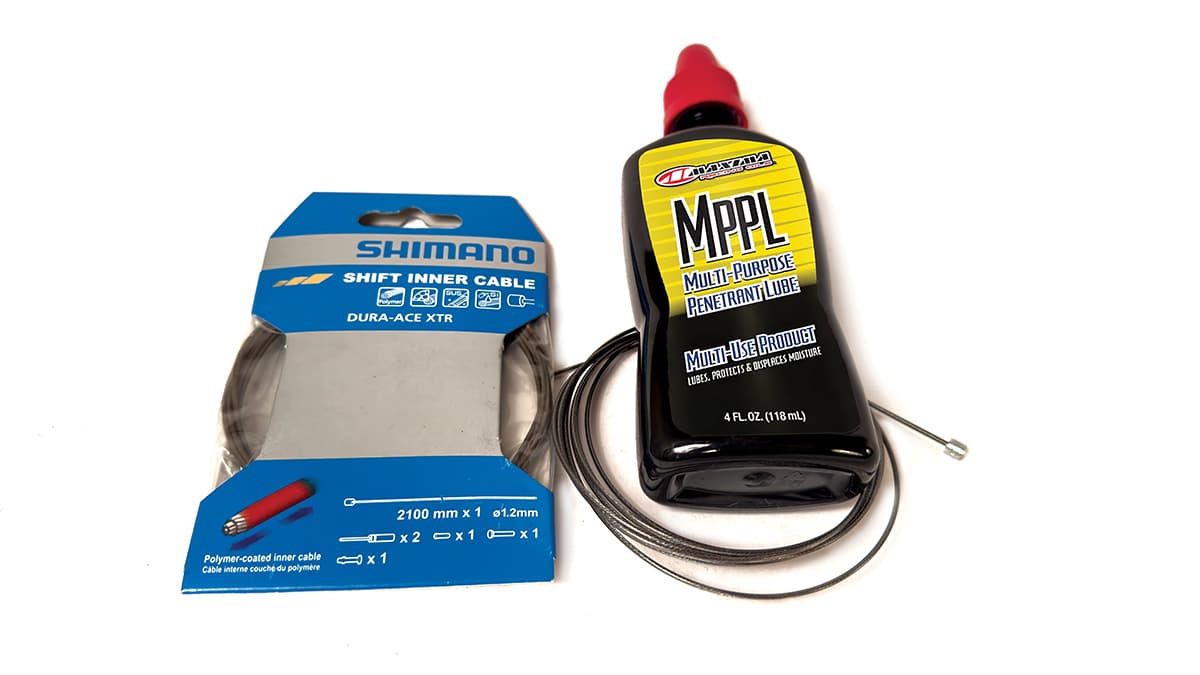ASK MBA: DO YOU NEED TO LUBE YOUR MOUNTAN BIKE’S CABLES?
The real question is what lube to use and when to use it

ASK MBA: DO YOU NEED TO LUBE YOUR MOUNTAN BIKE’S CABLES?
Q: I’ve been riding bikes for a few years now (I guess you could call me a COVID rider) and have finally gotten to the point where I’d like to try to work on my own bike. The first thing I’m going to do is replace my shift and dropper post cables because they’re just not working right. I’ve heard some things about lubricating the cable, but I’m not sure what that means or why it’s necessary.
Chad Broman
Boise, Idaho
A: Replacing any cable on your bike can either be the easiest or hardest thing to do depending on what bike you have. Now, before we get to the importance of cable lubrication, we recommend you also refresh your housing, along with the new cables. This will just prolong your equipment’s life and help you achieve a smooth cable stroke as you shift or activate your dropper. Check out the “Garage Files” for guidance on how to do that.
When it comes to lubricating cables, we’d say, and we feel most of the technical side of the industry would agree with us, that lubricating your cables before installing them is a must for optimal performance in the long run. Shimano’s cables have different levels of coating from their Ultimate slick polymer coating to their Optislick coating to their polished stainless steel cable with no coating. Jagwire doesn’t add coatings on their cables, instead opting to polish their cables to different levels of slickness to keep the friction down.
With Shimano’s cables, except the non-coated option, you’ll likely be just fine without lubricating the cable, though we generally still do. With bare stainless steel cables, we always lubricate them, no matter how polished they may be. It helps keep corrosion down and helps the shifting or dropper to operate more smoothly for longer. There are a few companies out there that offer Teflon-coated shift cables as a self-lubricating option.
On the housing side of things, there are fewer options, though Jagwire offers something called Slick-Lube, which lines the inside of their Sport Shift housing. This means that Jagwire has pre-lubricated the inner lining of the housing so you don’t have to worry about doing it yourself. But, here’s the thing, as a general rule of thumb, we recommend that you always lubricate any cable before you push it through the housing it will remain in for the rest of its life, no matter how much the companies say you don’t have to.
The type of lubricant you use matters. If you use a heavy assembly grease, it will actually create drag and increase friction in the housing, making your shifter or dropper lever feel heavy.
We like to use Shimano’s Special Grease, which is a grease they produce for the specific job of lubricating cables and housing. It works extremely well and doesn’t pick up too much outside grime as it protects the cable against the elements. It also brings with it a lever/shifter feel that is light as air and doesn’t fade over time. We’ve also noticed it helps increase the functional life of our cables and housing. We also like Maxima’s MPPL lube for similar reasons. If you don’t have access to that stuff, you can use other light greases, 3-In-One oil or even your chain lube if you’re desperate.
Keep in mind that some wet lubes, as they have on your chain, might collect dust and debris from the outside world, which can eventually clog up the system and lead to premature wear. In most systems these days, the cable is entirely secured inside the housing, so you shouldn’t have to worry about exposure to the outside world. We hope this helps answer your question.




